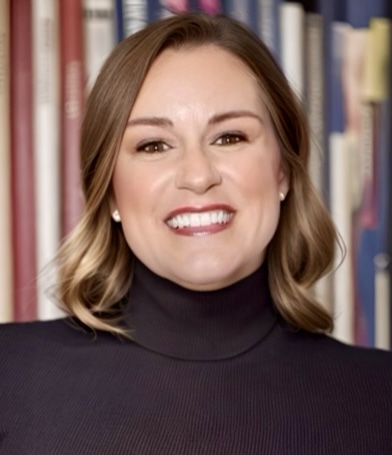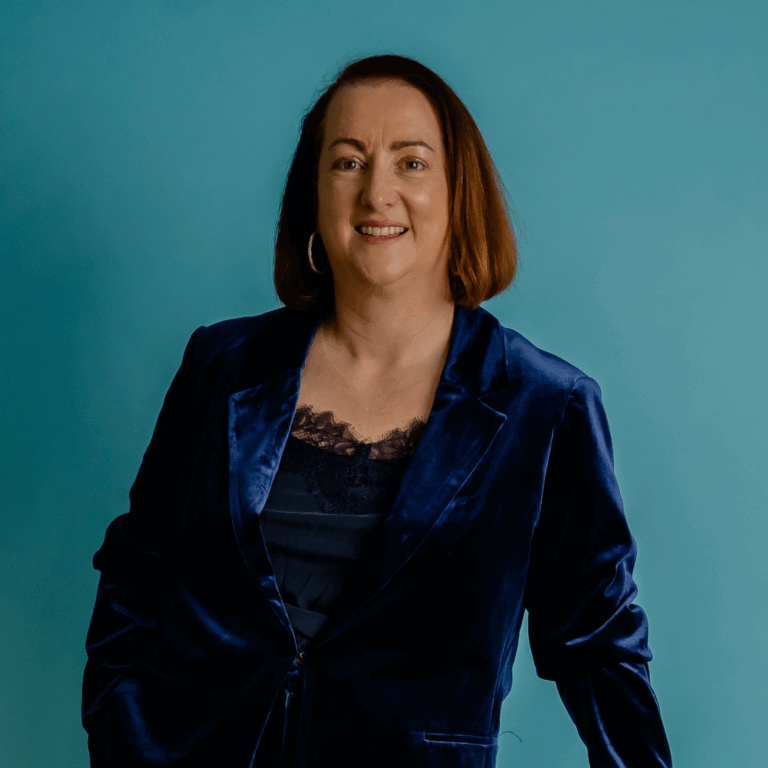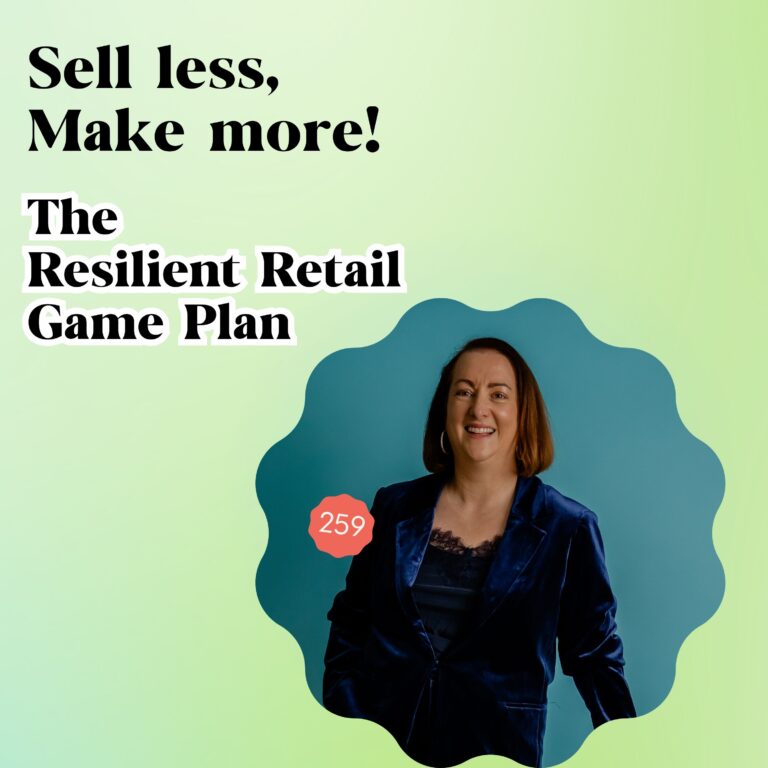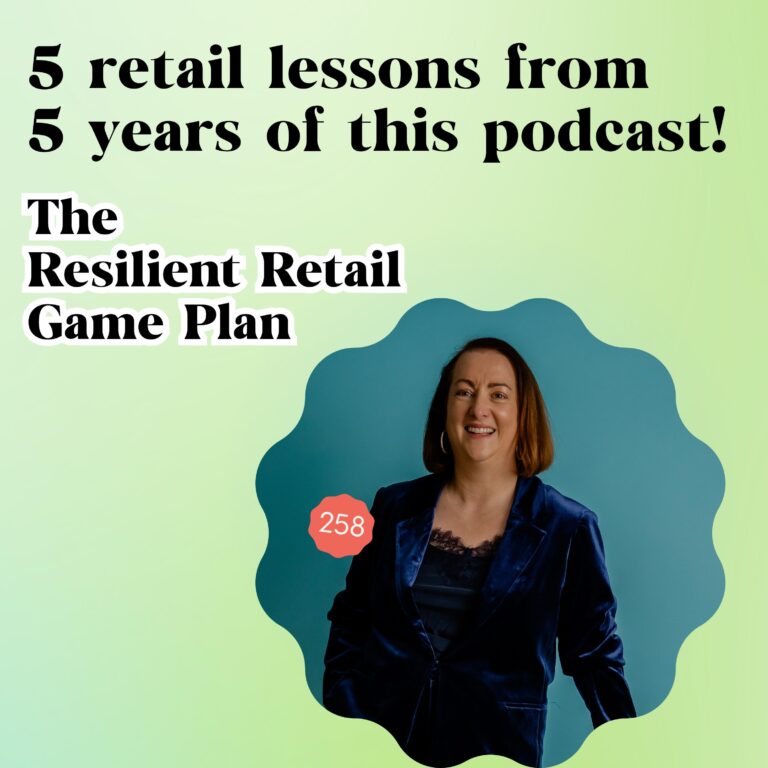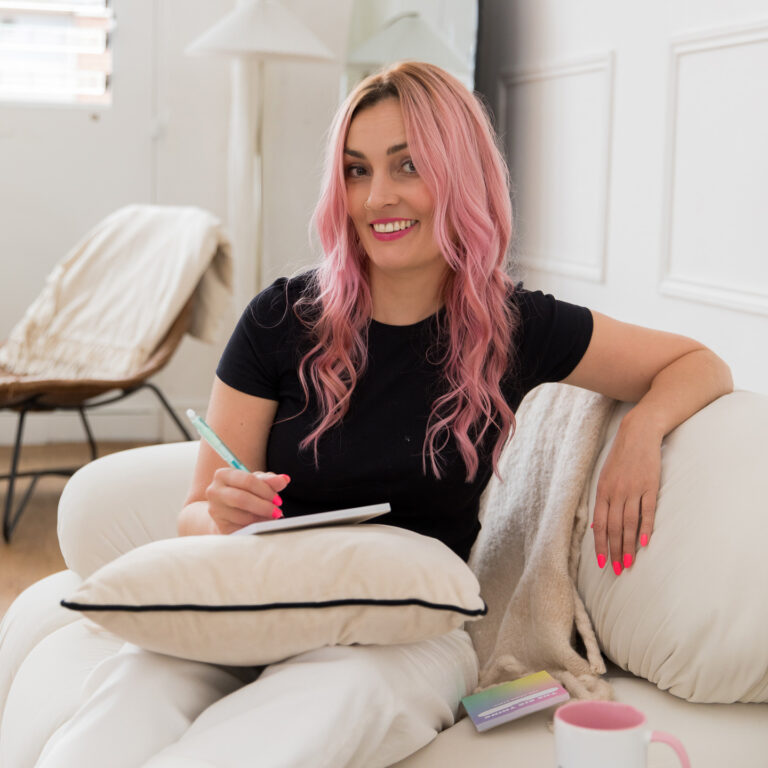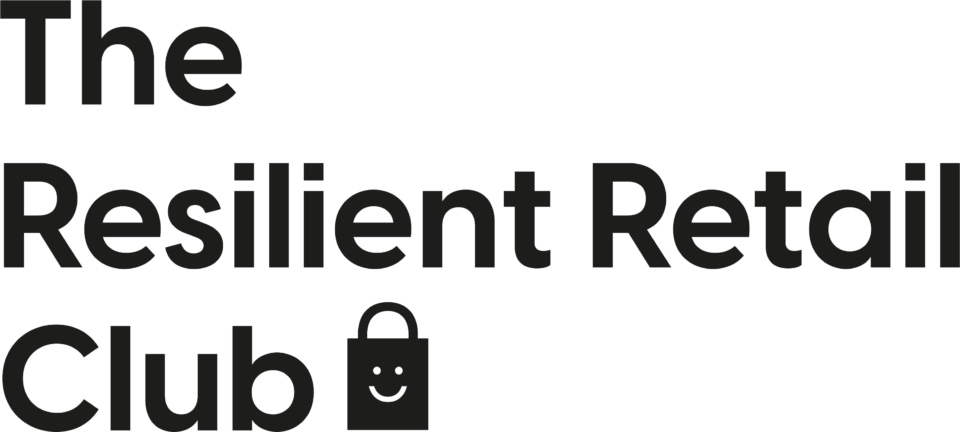Dive into Google Shopping Ads with Sara Jones
Catherine Erdly: Have you used Google shopping in your business? Maybe you’ve given it a go, but you’re not really sure if you’re getting the best results or you’ve taken a look and it just all seems too complicated.
Hi, I’m Catherine Erdly. You’re listening to the Resilient Retail Game Plan. I am your host, and I’m also the founder of the Resilient Retail Club. Which is my membership group and mastermind for product businesses.
I’m joined today on the podcast by Sara Jones. She is the founder of the Online Retail Academy and she’s a specialist in Google Shopping Ads. She’s going to be talking to me today all about what it is, how to set it up and how to get the best results for your business.
Welcome to the Resilient Retail Game Plan, a podcast for anyone wanting to start, grow or scale a profitable creative product business with me, Catherine Erdly. The Resilient Retail Game Plan is a podcast dedicated to one thing, breaking down the concepts and tools that I’ve gathered from 20 years in the retail industry and showing you how you can use them in your business. This is the real nuts and bolts of running a successful product business, broken down in an easy, accessible way. This is not a podcast about learning how to make your business look good. It’s the tools and techniques that will make you and your business feel good. Confidently plan, launch and manage your products and feel in control of your sales numbers and cashflow to help you build a resilient retail business.
Welcome Sara Jones! Founder of the Online Retail Academy
Catherine Erdly: Sara, welcome to the podcast. It’s fabulous to have you with us. Do you want to start off by introducing yourself and your business?
Sara Jones: Thank you for having me, Catherine. Yeah, I’m Sara Jones. I am the founder of the online retail academy which is a membership that teaches Google Shopping. And I also do one to one ads Google Ads management for e-commerce businesses as well. In a nutshell, that’s me.
What is the difference between advertising on social media versus Google advertising?
Catherine Erdly: That’s going to be what we’re talking about today. So let’s just start off by talking a little bit about meta advertising versus Google advertising and the main difference that you see.
Sara Jones: Yeah, so I’m talking specifically about Google Shopping because people who know about advertising will know that you can do Google Advertising that kind of is the equivalent of Facebook Advertising, but specifically we’re talking about Google Shopping here today.
Facebook Advertising or Meta Advertising is interruption marketing.It’s where you are trying to stop somebody’s scroll. They’re looking for video, cat videos or dog videos in my case. And you’re hoping that you have targeted somebody because obviously they are interested in something, let’s call it, let’s say running shoes, whatever. I always use running shoes. I’m not a runner.
Catherine Erdly: I was looking at running shoes this morning, funnily enough.
Sara Jones: It’s always my go to example, running shoes, and you are showing an ad to somebody in the hope that you can A. distract them for long enough to stop the scroll, B to attract their attention to your ads so that they might be intrigued enough to click and then hopefully they might buy.
So interruption marketing where you are targeting people based on behaviors, what Facebook knows about them and showing them an ad. Hoping that it’s an interesting enough ad to stop the scroll, that you can intrigue them enough to click on the ad and then hopefully they will buy.
Catherine Erdly: Yep.
Sara Jones: So with Google Shopping ads you are able to put your ad in front of somebody when they are actually, let’s use running shoes as an example, they are actually looking for a new pair of running shoes. They will go to Google and they will search for, running shoes or Adidas running shoes or Nike Air running shoes.
And then you can put an ad in front of them right there. So the intention is much higher and you can show them the ad when they are looking for the products that you sell. And then incidentally, you only pay when they click on your ad. So if what you show them isn’t interesting to them, they won’t click on your ad.
They only pay when they actually click on your ad. Whereas Meta, obviously, you’re paying to just show the ad to somebody in the hope that they’ll click, if that makes sense?
Catherine Erdly: Yes. Yes. You shared before we started recording that you had your own product business previously. So I’m assuming from your own experience, you found Google shopping much, much better for your business.
Sara Jones: I just didn’t do Facebook. And so Google Ads was where I started. ’cause I just thought, “Oh, I need to get some traffic to my website ’cause they’re not gonna find me otherwise.” So I just had a little go at Google ads and that’s how I discovered it.I did it on and off for a little bit.
As I said, it’s a whole different story with what happened with that business, because I was too reliant on organic traffic. But anyway that’s where my interest in Google ads started and where I first used what is now Google shopping, which used to be called frugal and it was free.
And so that piqued my interest and I realized when I came back to doing it a little bit later that, “Oh, hang on a minute. I can spend money and get purchases directly.” So, Facebook ads, I don’t remember ever really trying Facebook ads at that time. I’ve tried it since but I just love Google Shopping because it’s so intentional that you know what people are looking for and you can choose what you show up for.
Catherine Erdly: You an be really specific.
Sara Jones: And hopefully you are going to want, they’re going to like what they see and they’re going to like the price that they see and they’re going to want to buy from you. Yeah.
What is the difference between sponsored listings and shopping images in google?
Catherine Erdly: Can you just run us through the difference between, for example, Google shopping, where you have the images at the top versus say sponsored results when your people are searching in Google?
Sara Jones: So yeah, what we call the shopping ads are, as you quite rightly say, those product images that you have running across the top. Sometimes they’re down the right-hand side. And those are the shopping ads, the shopping listings, the text ads. So the sponsored, you can see, it says sponsored ads and you have usually about four, which will be then underneath the shopping ads, those four at the top, and then you’ll have some at the bottom of the page as well.
I think this is what most people think of when they think of Google ads. Where they’ve tried it before. They’ll set up a Google ad account. It’ll ask them for some keywords and they’ll put some keywords in, they’ll put running shoes in, they’ll write some ads.
And then they’ll set it running and that’s what those search ads are underneath is you’re picking the keywords. You’re saying please show me when somebody searches these words and show them this ad and it’s just text It’s a headline a couple of descriptions and a few extra bits that you can add as well.
Whereas the shopping ads across the top you are then able to show them a product image. They can see the price. They can see your brand name. And very often, depending on, if you have it set up they can see your star rating and review ratings. They can see offers that you might have, or they can sometimes see what returns you have if it’s on sale. So there’s a lot more going on in that shopping ad, and it’s way more visually appealing than the search ads.
Both work incidentally, but shopping ads generally for e-commerce will work better.
Are there specific types of businesses that are eligible to run Google Shopping?
Catherine Erdly: That makes sense. People are looking for products and they can see pictures of products. So are there specific types of businesses that are eligible to run Google Shopping?
Sara Jones: Yes. Although it’s better to say that there are some that are not eligible. So the main criteria is having physical products, so if you’re selling courses or PDF downloads, you can’t use, it needs to be a physical product.
It needs to be not classed as illegal. You can’t sell firearms. You can’t sell CBD type products. There’s a few other things.
So as long as it doesn’t fall into any of those like pharmaceuticals, that kind of stuff. Fake branded goods, you can’t sell any of that.
And you also need to have a fully secure checkout. Meaning people actually need to be able to buy online on the website and it needs to be secure.
And you can’t have a wholesale website, you wouldn’t be able to do it. If you have to log in to actually see a price, then you can’t use Google shopping for those. Cause obviously. The price is included in the ad. So if you have a website where somebody has to log in to see prices, then you can’t use Google shopping.
There are a few other like minor things, but I think those are the main criteria needs to be legal, needs to be physical, and you need to have a secure checkout and price is visible on the product page.
Catherine Erdly: Okay, great. So most people will be able to majority of people listening will be able to qualify for that. And is there any restriction on whether or not it’s your product or if you’re selling another brand, for example, and things like that, or is that pretty much all?
Sara Jones: No, that’s fine. It doesn’t have to be your own brand of products because obviously resellers, people like John Lewis, not Marks and Spencers because it is all Marks and Spencers, but like John Lewis, all those big retailers will all be advertising on Google shopping. Well, Etsy is a perfect example. They run Google Shopping Ads for their sellers. So yeah, it doesn’t have to be your own brand to be selling on google Shopping.
Catherine Erdly: Okay.
Sara Jones: It can be any brand.
What do retailers need to have to get started with Google Shopping Ads?
Catherine Erdly: Got it. Great. And so someone’s listening to this thinking, all right, this sounds intriguing. What do they need to have to get started?
Sara Jones: As I said, website needs to be all set up.
The main things you need are a product feed. And I think this is where most people get stuck is they see what they have to go through. And they’re like, I just don’t get it. I don’t understand. You have to have a product feed.
A product feed is basically a massive file of data that basically is the data for all your products. So you have your website, you will have a Google Merchant Center account. So it’s Google’s data warehouse for your product information. So you will pull your product information from your website and it will be housed in Google Merchant Center where Google will look at all that product information and say, is that valid? Are the images okay? In other words, you haven’t got any inappropriate images. Are the links working? Is there a description of the product? All the data for your product is held in there in what we call the product feed. And once Google says, yep, we’re happy with all of that, it’ll tell you if it’s thinks there are errors or warnings.
Once it’s happy with that, you then have your Google ad account. And then you link your Merchant Center account to your Google Ad account. And then that product information then gets pushed and fed into your Google Ad account. And your Ad account is where you actually run the Google Shopping ads. Does that make sense?
In the most fundamental level, you’ve got your website, which is connected to your merchant center, that’s where the product information goes back and forth. And then merchant center talks to your Google ad account. And then that, and some data goes back into merchants, like clicks and impressions.
You can see that kind of data in there. And then in the actual ad account, that’s where you run your Google shopping ads using the data from merchant center.
Catherine Erdly: And then in Merchant Center, so is that your product feed? Presumably it’s a similar, I was thinking of the, API. So it’s sort of the interface that you might have that goes, say to Instagram shop or TikTok shop. So Google Merchant Center, it should be fairly straightforward.
You know, if you’ve got Shopify or WordPress.
Sara Jones: Yes. If you’re on Shopify, there’s the Google channel app. The Google channel app links up your analytics. So it links up your GA4. It links up your merchant center and it links up your ad account as well. And it’s fantastic. A lot easier these days to do it than it used to be.
I used to have to use Excel files and upload it all manually. It was a nightmare.
By the way, there are other apps. The Google channel app is the free app produced by Google. There are lots of paid apps. Which have additional functionality, which I’m not going to go into that, but there are additional things you can do with these apps that you can’t do with the channel app.
But the basics to get started, that channel app will set up the feed, and it will allow you to link everything together.
And it’s pretty, it’s has its limitations. But for people getting started, it does make life a lot easier than having to manually create these product feeds and keeps everything in sync.
So as new products get added in Shopify, it’ll automatically gets updated.
It’s like, it’s just like a catalog, the Facebook catalog. It’s the same principle, but obviously then you’ve got the Facebook app where you create your Facebook catalog for Instagram ads and whatever. It’s a similar, it’s a similar process with. And by the way, BigCommerce, you’ll have apps, you have plugins for WooCommerce, all the big platforms will have some kind of plugin or app to do that side of it for you and create that feed.
Catherine Erdly: So it will be fairly straightforward. So those are your must haves. You’ve got to have a Google merchant center. You’ve got to have a Google ads account. You’ve got to have a website for the checkout.
What are some of the nice to have things that make it more likely to succeed?
But what are some of the nice to have some of the things that make it more likely to succeed?
Sara Jones: Okay. So this is this is a good question because the main thing you need, because like I explained before, It is a demand based advertising, so you need to have people who know about your product and understand it because they need to start searching for it. The example I always like using is, do you remember poopourri was all the rage a while ago?
And so it’s that spray when you go to the loo. Like nobody knew about that. So that company launched, I think, was it YouTube ads and Facebook or something? And it just skyrocketed. It was huge, but you could never have done that on Google. Cause like none of us knew we needed it for a start.
Nobody would have known how to even look for it.
Catherine Erdly: Yeah.
Sara Jones: So that is probably one of the biggest things is. People need to understand what your product is. They need to know that they need it, or at least they need to know that they have the problem that your product solves. Does that making sense?
So if it’s some really innovative new product that nobody really knows yet, then you’re probably are better off with Facebook, TikTok, or Instagram or whatever, where you can show it to people and explain how it works. And then once people understand it, they’ll start searching for it on Google.
So that I would say is the main thing. Because that gives you the search demand. So that you can show your ad.
Another big one that I think is where people struggle the most when they can check all the boxes. So they have a go and they set their ads running and yes, they start their ads and they get orders.
And it’s lovely, but they just never seem to be able to get that return on ad spend. They never seem to be able to do it really profitably. And nine times out of 10, that will be because their average order value is too low. So I tend to say ideally an average order value of 30 pounds and above.
Catherine Erdly: Okay.
Sara Jones: It doesn’t mean you can’t run shopping ads and won’t mean that you won’t get sales through shopping ads.
It just makes it harder to make it profitable. So if you’ve got an average order value of say between 30 and a hundred, you’re paying for every click that comes through to your website. And so say you’ve got a conversion rate of, let’s say 1 percent because it’s easier to work out the maths.
You’re paying 50p a click, you get 100 clicks, you get one order. So you’ve paid 50p a click for 100 clicks. That’s 50, 50 quid for right foot. And then you get one order. If that order is only 15 pounds, you’re losing money before you start. So average order value of 30 and above, I would recommend.
Catherine Erdly: That’s your conversion rate. The better the rate the better your return.
Sara Jones: Yes, I think that’s what you have to remember with any paid ads.
This is not just Google, it’s any paid ads. Cause you won’t look at your ads and go, Oh my God. And you blame the ads because you say, Oh, the ads aren’t working. Whereas if the ads are driving good traffic to your website, it’s your website’s job then actually convert them. So you do have to think about that.
If your conversion rate on your website is less than half a percent, then I think you need to address that.
Catherine Erdly: Pouring water into a leaky bucket, isn’t?
Sara Jones: Exactly. And so don’t blame the ads and say the ads aren’t working if it’s just your website is really difficult to navigate and people can’t find stuff that they’re looking for and your checkout is six pages long.
And people get fed up before they get online. You don’t accept PayPal or you don’t accept Apple Pay or whatever.
So yeah, I’m going off on a bit of a tangent there, but a decent size average order value. Once you get to high average order values as well, that adds an aboutlevel. So you do have to think about that. But I think if you’ve got an average order value 30 to 75, that’s probably about the sweet spot, I’d say.
Again, not to say it’s impossible to do it, just makes it a little bit harder and you have to know what you’re doing, if your average order value is a bit lower, to make it profitable.
Let’s talk about keyword research
Catherine Erdly: Yeah, for sure. And so when you set up the shopping ads, you need to know what people will be searching for your products as well, right? You need to know, are they searching for sustainable UK fashion or tampers from new mums.
Sara Jones: Yes. So this is where your keyword research goes in. So I mentioned earlier about these search ads where, you know, you say here are my keywords,
Catherine Erdly: Mm-Hmm.
Sara Jones: please show an ad when somebody searches for this. With Google shopping, you, here is my product information.
You decide when to show somebody an ad. That’s basically what you’re saying to Google. So it’s our job as advertisers to make sure that product information, and I’m talking predominantly product titles and product descriptions,
Catherine Erdly: Yeah.
Sara Jones: And phrases that people will actually be using. This is an example that I found.
And this is. This is when people start talking about feed optimization. This is what they’re talking about. I found an example because I was looking for an example to try and illustrate this. So I found a website that sold sweatshirts and they had like a Christmas Rudolph sweatshirt.
So it had like a, just this motif of a red nose and some outlets on the front of a grace gray sweatshirt. Okay. And the product As I recall was called, was something like the Rudolph one. Like that was the product title. Okay. And I looked at the product description and it was talking all about, they had all this lovely imagery about reindeers and Christmas and all this kind of stuff.
Nowhere did it say anywhere that was a gray sweatshirt. Okay. So if you put that in a shopping feed and run an ad. How would Google even know that you have a gray sweatshirt, if somebody’s searching for a gray reindeer sweatshirt,
Catherine Erdly: Yeah.
Sara Jones: unless you have that in your product title and your description, how is Google going to know that product is relevant to what somebody’s searching?
So that’s our job as retailers to do that bit of research. Cause I think creative people, particularly, we’re very good at this. We have these beautiful products and we don’t just say, this is a, I can’t think of a product now. This is a blue crossbody bag. Okay. We will call our blue crossbody bag.
It’ll be the Adele. Okay. And so our product title will be. The Adele. But that doesn’t tell Google that it’s a blue crossbody bag. Okay.
Catherine Erdly: Big retailers, several years ago now, I worked for the clothing retailer Coast that now is part of the Boohoo group, it’s one of their brands, but the days when it was independent and they had the same thing, I remember having this argument the, e commerce team having this argument with the buying team because you know, everything was the Laurie Lee dress and the this dress and they were
like, no, this is nothing.
Sara Jones: And it’s worth mentioning actually, because I know there’ll be, I know there will be people out there going, yeah, but I don’t want to, I want my website to still say it’s the Lori Lee dress. Don’t want to have to say, I don’t want to have a product title that looks like one of these things on Amazon.
Do you know what I mean? That says maxi long floor dress, floor length gathered.
Catherine Erdly: Yeah.
Sara Jones: You don’t have to do that. You can have a different product title in your shopping data for Google than you have on your website.
Can do that so that you’re telling Google, these are the keywords, this is what’s relevant, but your website can still say the Lori Lee dress or the Adele bag. are, but you don’t have to have these massively long keyword stuffed product titles on your beautifully designed websites. You can just give that information to Google to say, this is the product title we want you to see so that it’s relevant for what people search.
Catherine Erdly: So you’re the key thing is getting the photos, getting it, getting the data feed, going to Google and making sure that in that data feed, it’s got enough information that Google can then decide when to show it to people.
What kind of budget do people need to be thinking about for this kind of shopping ad?
Catherine Erdly: So what kind of budget do people need to be thinking about for this kind of shopping ad?
Sara Jones: so you can, it’s not like meta ads where I think generally people tend to say we have to have at least so much a day to make meta ads work with Google. You literally can start with like a five or a day. You could start with a pound a day if you wanted to. The difference is that the longer it will take you to get the data, to start being able to optimize, to be able to tweak things and edit things to get the results that you want.
So I would, most people, I say just start with, if you can start with five or 10 pounds a day. Then, you know, you’ll be fine. So what, 10 pounds a day would be about 300, just over 300 pounds a month. And I think for a lot of people, they just want the reassurance that it’s going to work
And so that they don’t want to throw a thousand pounds at something that like, Oh, I don’t know if it’s going to work.
It might waste a load of money. So I would say just start small because once you start seeing a few orders coming through and that gives you the confidence, and if you’re getting a good return on ad spend, then why wouldn’t you put the budget up And then you can slowly increase the budget as you get more confident, as you get your results as you want them, as you’re doing your tweaking and optimizing as you’re going forward.
But, yeah, 5 a day is what you can start with, no problem at all with Google Ads.
Catherine Erdly: Okay. Thanks for bringing up the return on ad spend, because that was going to be my next question really, was that, I know you can’t say, oh, you will get X return on ad spend, but, you know, what is, because it’s one of those, how long is a piece of string, right? But what is sort of average or not unreasonable to expect?
Sara Jones: I have several different, obviously I have clients across several different niches. I’ve got a games retailer and he all day long gets Seven to 800 percent return on ad spend. It’s tabletop games, massively popular. There’s a huge market. Amazing. I’ve got a client that sells like oxygen concentrators and CPAP machines and nebulizers and stuff like that.
We get all day long, maybe 400 percent return on ad spend. So it can be anything. I think the important question to ask is actually what you have to understand what your numbers need to be. So I’ve got another jewelry brand who, because it’s her own brand, she has really good margins. So while, you know, while we’re getting sort of four to five row as on hers, she could actually, that could actually, she could probably get a three row as, and still be profitable because she has such good margins.
So I think that’s another thing. I think that it worries me that people would just pick a number from it and cause they think, oh, I have to get 600 percent row as. Yeah. Cause like everybody tells me that’s what a really good ROAS is 600%. For your business, 300 percent ROAS might be really good
Catherine Erdly: Depends on your margin. Yeah.
Sara Jones: might be awful.
Like if you’re, if you’ve only got, if you’re selling products that only have like a 20 percent margin.
600 percent ROAS, you’re probably like ROAS probably needs to be a bit better than that even,
Catherine Erdly: Yeah.
Sara Jones: do have calculators in the membership where you can plug in all that stuff in your product cost and it shows you what your ROAS would need to be to actually make a profit.
But yeah, again, it’s influenced by the competition, you know, it’s influenced by your average order value. It’s influenced by just the the type of product you have, what the demand is. But I tend to, whenever I start working with somebody new, I tend to pitch it, like I say 400, let’s go 400, that’s where I’m aiming for.
And then once we get there as on a brand new account, once you hit 400, then we look and see. where we can push it and
Catherine Erdly: So for every one pound spent, you’re getting four pounds
Sara Jones: pounds out. Yes.
Catherine Erdly: Sales, not profit, just to make that point again.
Sara Jones: absolutely.
Catherine Erdly: Fantastic. That’s super useful. And just one last question. There’s obviously been a lot of chat with ads and of all kinds about increasing costs.
Will Google Shopping Ads see the same shift in cost as we’ve seen in the social media sites?
Catherine Erdly: What are your feelings about Google ad costs over, you know, in the year ahead? Do you, have you seen a shift? What are your thoughts?
How are you feeling about?
Sara Jones: I think it’s fair to say that ad costs have risen across all platforms over the last few years. We had that wonderful boom over during COVID, didn’t we? But it’s all coming sort of back to normal now. And I, I don’t, I, you know, I look at the future and I think, do I don’t know, is it going to, they probably are going to continue going up because more people are going to be advertising.
To me I feel that a run ad account it shouldn’t really matter. Because if your ad costs have gone up, everybody’s ad costs have gone up. Okay. And so as a retailer, you should be monitoring all of that. If all your costs are going up, then you need to be putting your product prices up as well.
Yes, I know it’s not ideal, but ultimately we’re in business to make money. I think we need to focus on, are we making money in this account? You know, yes, maybe our ad costs have gone up. Over what they were last year. But as long as we can still do the work, still do the optimization and still keep an eye on our numbers so that we know that we’re making a profit, I think there’s still scope to. massive things and for retailers to have really good success. And yes, I think you can compete with the big boys, which is, I just want to put that in there because a lot of people, I tend to think, Oh, how can I compete with people with hundred thousand pound budgets? You can, you just need to do the work and know what you’re doing and set it up right. You can grab your little share, your
Catherine Erdly: Grab your piece of the pie.
Sara Jones: Yes. Of the pie. Because we just want a little piece of the pie, don’t we? Most of us don’t want the whole pie. We just want a little piece to keep us going and to make our little bit of impact in the world. Yeah.
Where can you learn more about Sara and the Online Retail Academy
Catherine Erdly: Fantastic. Thank you so much, Sara. It’s been really fascinating conversation and why not finish off by letting everyone know where they can find out more about working with you and your membership.
Sara Jones: Okay. Oh, that’d be lovely. Yes, my membership is the online retail Academy. So it’s just at online retail academy. com. And if you go to online retail academy. com forward slash quiz, there is actually a little Google shopping quiz, which is like nine questions takes about 30 seconds to answer. And it will actually tell you whether Google shopping is likely to work for you. That’s quite handy to get you started. On Instagram, I’m the underscore online retail academy, and I would love to have you come along and say hi. And yeah, share your stores with me so I can follow you back.
Catherine Erdly: Thanks for listening. Don’t forget to go check out Sara’s quiz about whether or not you’re ready to start running Google ads on her website. You can get the link in the show notes below and also don’t forget to rate and review the podcast. If you have a minute, you can rate and review it in Apple podcasts and you can also rate the podcast within the Spotify app.
If you have a minute as well, then why not follow or subscribe to the podcast and that way you’ll be the first to know about every new episode that comes out each Thursday morning. See you then.


